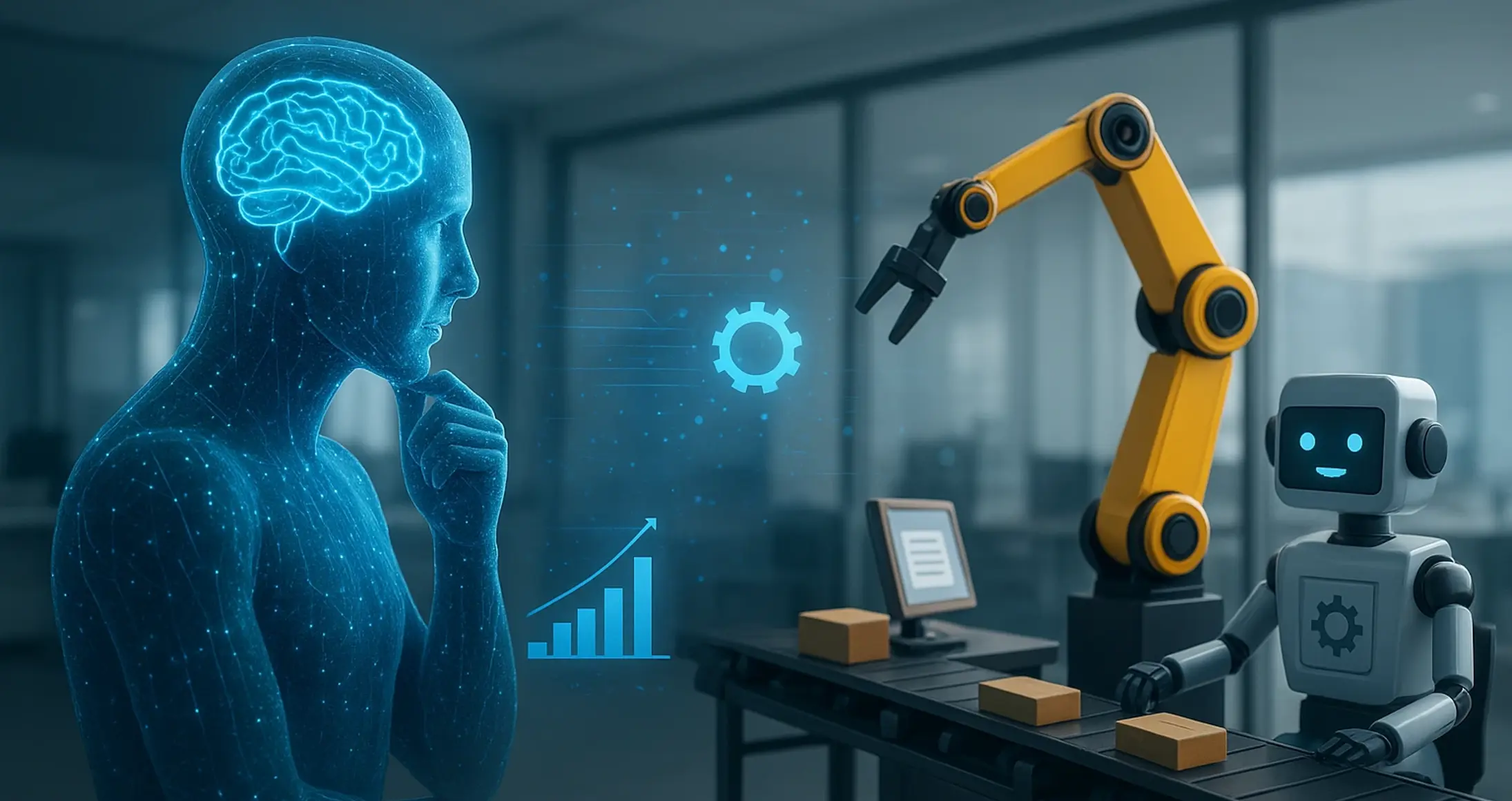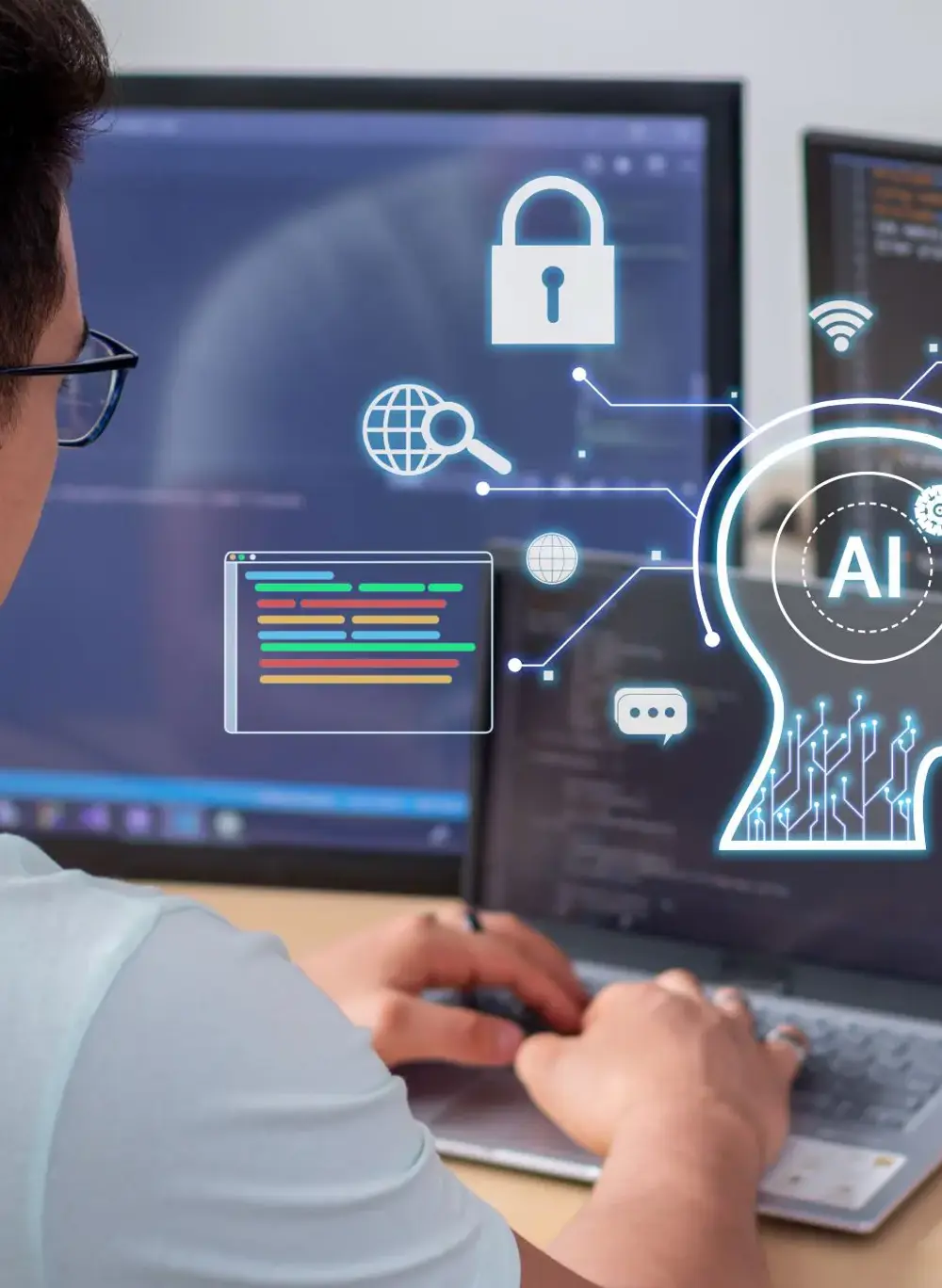If you’ve been anywhere near LinkedIn, the news, or even a team meeting recently, you’ve probably heard the terms “automation” and “AI” come up frequently. These ideas have been around for a while, but over the last couple of years, they’ve started showing up in more everyday conversations. The problem is, most people still don’t know exactly what each one means, or how to actually apply them in a business context.
Some people believe that AI will replace everything and others think automation is just for large companies with big budgets. Plenty of people think they’re basically the same thing. But, they’re not.
This post goes over what automation is, what AI is, how they’re different, and where they work well together with a practical explanation for business owners, managers, or anyone trying to figure out how to work smarter.
What is automation?
Automation is about setting up systems that carry out tasks without a person having to manually trigger or complete them. It's ideal for processes that are consistent and predictable.
So for example, in real life this might be if someone fills in a form on your website:
- The information goes straight into your CRM
- A confirmation email is sent automatically
- The sales team gets notified in Teams or by email
- A task is created in your pipeline to follow it up
Once it’s set up, no one has to think about it anymore and the process just runs.
Other common examples include:
- When a customer makes a payment, a thank-you message is sent, and their account status is updated
- When a lead moves to a new sales stage, the reporting dashboard updates in real time
- At the end of the week, a summary of completed support tickets is emailed to the manager
All of this is automation, and it’s reliable, fast and it cuts out all the slow, manual admin that people don’t particularly enjoy doing.
Other benefits include reducing mistakes. People often forget steps, get distracted, or mis-click. Automated systems don’t do this and as long as the logic is correct, they do the job the same way every time. You don’t need to automate everything at once. But even a few key processes can make a big difference in saving time and reducing bottlenecks.
What is AI?
Artificial Intelligence is a bit different as it’s not just about carrying out tasks. It's more about making sense of information. AI is very good at dealing with things that are messy, unstructured, or unclear. It can analyse language, recognise patterns, summarise text, or generate new content based on examples.
Some real-world examples of where AI is useful include:
- A customer sends an email with a long explanation of their issue. AI reads the message, identifies the main problem, and extracts the important details.
- You ask AI to generate a draft response based on the customer’s tone and your company’s previous replies. It writes something that a human can quickly review and send, rather than starting from scratch.
- Your team needs to create a monthly report. AI pulls together insights from previous reports, adds in this month’s data, and writes the first version.
- You upload a batch of CVs and AI quickly sorts them based on skills, location, and experience level, saving the HR team several hours.
In all of these cases, you’re not giving AI a fixed set of rules to follow. You’re giving it information and asking it to make sense of it.
AI is also improving fast and over the last 12 to 18 months, it’s become more accessible and easier to integrate into day-to-day workflows. It’s still not perfect, and it still needs a human in the loop for most use cases, but it’s very capable in the right context.
The difference between automation and AI
What’s important to understand is that automation and AI are not the same thing even though they’re often they are talked about in the same context. They both solve different types of problems.
Automation is task-focused and for when you already know what to do. The steps are clear, and you want them done quickly and accurately, without needing a person to do each one.
AI is information-focused. It’s like having a problem-solver who can look at the situation and decide the best course of action even when the exact steps aren’t known in advance.
Where they work best together
You don’t have to choose one or the other and they’re strongest when used together. For example, let’s say your business receives a lot of customer enquiries.
With automation alone:
- You can log the emails
- Assign them to a team
- Set deadlines
- Send confirmation messages
This will save some time and effort but you still need someone to read each message and decide what to do with it.
Adding in AI will allow for:
- AI reads the email
- Identifies the topic
- Picks out key details like account number, product name, or tone
- Suggests a next step
- Automation then routes the request based on the AI’s analysis and triggers the appropriate workflow
This reduces the amount of time someone has to spend on each message down to a small fraction than before. Your response time goes down and the result is faster output, less manual work, and fewer mistakes.
Practical places to start
If this is new to you it can be hard to know where to begin. Here are a few good questions to ask yourself or your team:
- What tasks do we repeat every day or every week?
- Where are we still relying on copy and paste?
- Are there emails or requests that take too long to sort through?
- Do we spend time producing the same types of reports over and over again?
- Where do things regularly get missed or delayed because the process is too manual?
These are usually the areas where automation or AI can help and most often it’s a combination of both you need.
You don’t need to automate your whole business and you don’t need to adopt AI everywhere. However, even one or two improvements can give you back hours every week.
Final Thoughts
It’s easy to get overwhelmed with all the talk about technology. but at its core, this isn’t about hype. It’s about working better. Simply put automation handles the routine stuff while AI deals with the messy stuff. Together, they save time, reduce errors and let your people get on with work that actually matters.




